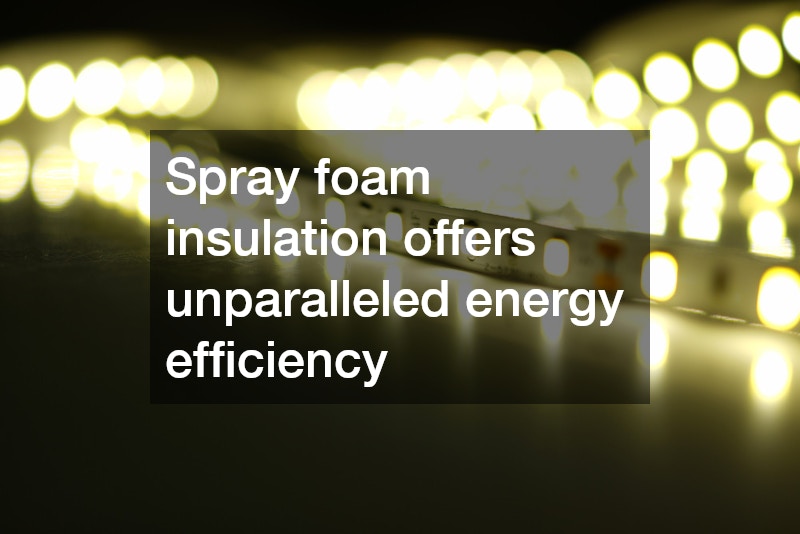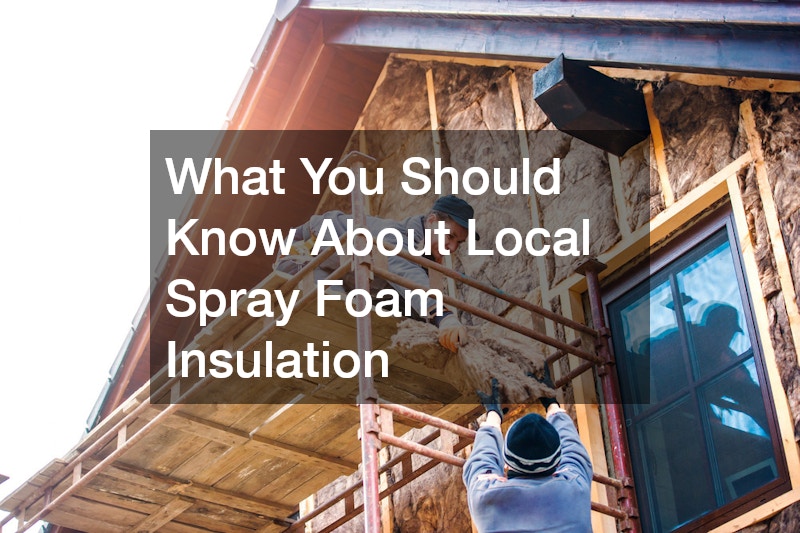In this article, we’ll explore essential information about local spray foam insulation, its benefits, installation process, cost considerations, and its impact on energy efficiency. Spray foam insulation has gained popularity for its effectiveness and sustainability, making it a favored choice among homeowners. It offers unique advantages over traditional insulation types, creating a comprehensive barrier that transforms homes into comfortable, efficient living spaces.
By diving into the specifics of spray foam insulation, homeowners can gain clarity on its potential to contribute to a greener and more energy-efficient future.
What is Spray Foam Insulation and How Does It Work?
Spray foam insulation is a composite material made by mixing two chemical compounds, polyurethane and isocyanate, which react to expand and harden. Once applied, it dries rapidly to form a solid barrier against heat loss or gain. It’s distinguished from other insulators by its ability to fill gaps and crevices, resulting in superior thermal performance. Its composition not only makes it an effective insulator but also imparts moisture and air-sealing properties.
There are two primary types of spray foam insulation: open-cell and closed-cell. Open-cell spray foam is lighter and less dense, making it a cost-effective option with effective soundproofing qualities. Closed-cell foam, on the other hand, boasts a denser structure that enhances its thermal resistance and provides a more robust moisture barrier. The choice between these types depends on the specific insulation needs and the environmental conditions of the area being insulated.
The application process of spray foam insulation involves spraying the mixed chemicals onto surfaces where they expand rapidly, creating a seamless insulating layer. This process ensures that all nooks and crannies are thoroughly filled, preventing air infiltration and lessening thermal bridging. The resultant solid foam provides a continual barrier that is not possible with traditional insulation materials such as batts or rolls. As it adheres well to substrates, spray foam insulation significantly augments the structural integrity of a building.
Why Choose Spray Foam Insulation Over Other Insulation Types?
Spray foam insulation offers unparalleled energy efficiency by creating a tightly sealed building envelope that minimizes heat transfer. This effectiveness reduces the demand on heating and cooling systems, leading to significant energy savings. Homeowners can experience lower utility bills, adding financial attractiveness to the choice of spray foam. It’s an ideal solution for achieving energy compliance with modern building codes and standards.
The durability and longevity of spray foam insulation stand out against traditional insulation types. Once cured, it resists degradation and maintains its properties without sagging or settling over time. Its resilience ensures a lasting solution that doesn’t require frequent maintenance or replacement, adding to its overall value proposition. Additionally, its capacity to add structural strength to building elements enhances its appeal as a durable insulation option.
Spray foam insulation acts as a superior moisture barrier, helping to protect buildings from water infiltration and mold. Closed-cell spray foam, in particular, is renowned for its waterproof attributes, making it suitable for areas prone to moisture exposure. By effectively sealing off sites vulnerable to leaks, it reduces the risk of mold growth, which can have unhealthy repercussions. Homeowners investing in spray foam benefit from both energy savings and protection against potential water damage.
How Does the Installation Process Work?
Preparing for spray foam insulation installation involves several essential steps to ensure successful and safe treatment areas. This includes cleaning the surfaces where the foam will be applied to ensure proper adhesion. Additionally, spaces must be cleared of any obstructions that may hinder the spraying process. Attention to detail during preparation is crucial to the coverage and effectiveness of the insulation.
The application of spray foam insulation requires specialized equipment to mix and spray the components accurately. Professionals might apply the foam using various techniques depending on the area size and specific insulation needs. Correct application is vital to ensure uniform coverage and maximum insulative efficiency. Certified installers bring the expertise required to manage intricate application processes and achieve optimum results.
Safety measures are paramount during the installation of spray foam insulation to protect both installers and homeowners. Wearing protective gear such as masks and gloves is essential, as the chemicals can be hazardous when inhaled or when coming in contact with skin. Proper ventilation during and after application helps in dissipating fumes and ensures safe indoor air quality. Choosing a knowledgeable installer who adheres to safety protocols minimizes health risks and contributes to a smooth installation process.
Spray foam insulation is a versatile and effective solution for enhancing energy efficiency and comfort in homes. By understanding its types, benefits, installation process, and costs, homeowners can make informed decisions about using spray foam insulation. Investing in this form of insulation aligns with a commitment to sustainability while reaping the long-term economic benefits of reduced energy consumption. Ultimately, the decision to use spray foam insulation comes with numerous advantages that contribute to a home’s overall performance and the well-being of its occupants.

